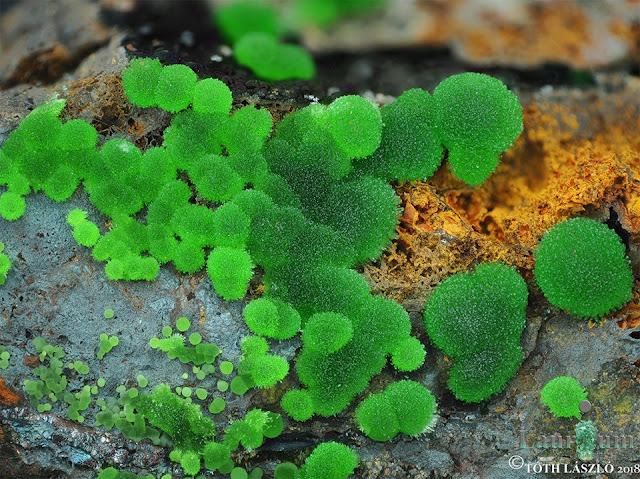 |
| By Tóth László. This azurite is from Lajos Kövecses-Varga collection and 2mm. Picture was taken with a new objective, extremely sharp |
 |
| By Tóth László. Adamite with handle. Very rare specimen from Lavrio. Collected by Vasilis Stergiou . FOV: 2,2mm vertical. (The handle is mimetite ) |
 |
| By Tóth László. Olivenite with chonicalcite. FOV:1,2mm horizontal. Vasilis Stergiou collection. Lavrio; Greece. |
 |
| By Tóth László. Azurite from Rudabánya (Hungary). Rare clear blue specimen from HOM (Herman Ottó Múzeum). FOV:4mm vertical. |
Micromount is term used by mineral collectors and amateur geologists to describe mineral specimens that are best appreciated using an optical aid, commonly a hand-lens or a binocular microscope. The magnification employed ranges from 10 to 40 times.
A micromount is permanently mounted in some kind of box and labelled with the name of the mineral and the location from which it came. Proper mounting both preserves delicate crystals, and facilitates their handling.
Micromounting is a craft, as much as it is a collecting activity.
Micromount specimen collecting has a number of advantages over collecting larger specimens.Micromount specimens take up less space and cost less than larger specimens.Small crystals are usually more perfect than larger ones.Micromount material can often be readily collected at locations that rarely if ever yield specimens with large crystals.Crystals of many rare species are only found in microscopic sizes.
[by P. Tzeferis]





























0 comments:
Δημοσίευση σχολίου
Προσβλέπω σε έναν ευπρεπή διάλογο χωρίς κακόβουλα και υβριστικά σχόλια που προσβάλλουν την αισθητική μας αλλά κι εκείνη της ελληνικής γλώσσας. Εντούτοις, όλα τα σχόλια δημοσιεύονται!